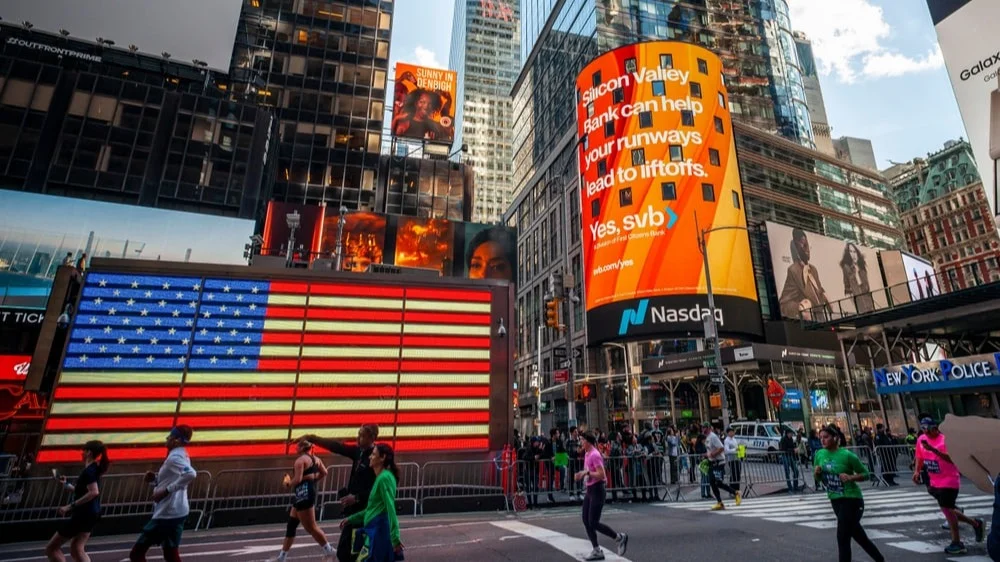Don't panic: why shouldn't the AI giant's rally be compared to the dot-com bubble?
Charles Schwab Chief Strategist Liz Ann Saunders explains why the stock market is more resilient today than during the dot-com boom times

In mid-July Apollo Global's chief economist warned - the current boom in artificial intelligence in the stock market could turn into a bubble even bigger than the dotcoms of the late 1990s. The tech sector is indeed in the spotlight, with shares of Nvidia, Meta, Microsoft and other AI leaders growing at double-digit rates and their share of the S&P 500 index reaching a record. High capital concentration and signs of overheating have some investors and analysts worried.
In turn, Charles Schwab chief investment strategist Liz Ann Saunders believes that despite elements of euphoria and record valuations, the current market leaders are qualitatively different companies compared to the dot-com era. Nevertheless, she advises investors not to forget the risks.
The market is going into concentration
In 2025, stock market euphoria is accompanied by an unprecedented concentration of capital in a limited circle of technology leaders. Shares of Nvidia, Meta and Microsoft have shown significant growth since the beginning of the year, and market participants are increasingly discussing the change of "stock nicknames": instead of the "Magnificent Seven" (Mag7), they now speak of the "Mag3", reflecting the contribution of a limited number of securities to the dynamics of the index.
By the end of the second quarter of 2025, seven AI giants - Nvidia, Microsoft, Apple, Amazon, Alphabet (3.96%), Meta Platforms, Tesla - form more than 30% of the weight of the S&P 500 Index. In the tech-heavy Nasdaq 100 index, the weight of the Magnificent Seven is even more significant at 62%. This concentration means that the performance of the entire index is largely dependent on the performance of these seven companies. Any significant fluctuations in the quotations of at least one of them can significantly affect the overall market dynamics. At the peak of the dotcom bubble in 1999, the aggregate share of the largest companies was 25%;
According to Liz Ann Saunders, the key risk for investors now is not so much the likelihood of a catastrophic collapse, but rather vulnerability due to the high concentration of capital in individual assets and insufficient diversification of portfolios. She emphasizes: "I think this is a risk for many, especially individual investors who may not be using a balance sheet management strategy. The main difference [from the dot-com boom] now is that while valuations are just as inflated, the fundamentals of companies are much stronger. .... If you look at measures such as the Buffett Indicator (i.e., the total market value of all stocks, not just large S&P companies, compared to the nation's GDP), current values have exceeded the highs we saw between 1999 and 2000."
Traders agree with Liz Ann Saunders' assessment: in the Charles Schwab second quarter 2025 survey, 51% of market participants believe it is overvalued, and 26% call AI stocks the most "overbought" and "overcrowded" group of instruments.
From dotcoms to AI: why history doesn't repeat itself
The dot-com bubble is a classic example of the market euphoria of the late 1990s. Back then, investors invested massively in Internet companies: many of them had just gone public, had no profits, no business model or even a finished product. Shares took off literally in days - for example, Pets com, eToys or Webvan quickly became symbols of the era, but went completely bankrupt within a couple years. Investors ignored the financials, betting on the "future of the Internet" and afraid of missing out on possible super-profits. As a result, by 2002 the NASDAQ NASDAQ index crashed by almost 80%, and thousands of dotcoms disappeared from the market.
Today, despite high multiples and an interest in the topic of artificial intelligence that is close to euphoria, the market situation is different from the late 90s. Liz Ann Saunders emphasizes: "In many ways, what drove the market in the late 1990s, except for some large mega-corporations, were stocks of companies with no earnings or even earnings prospects. It was truly a 'crazy time' when you just added dot com to the name of any company. Now we're talking about real companies with sustainable profit streams and a bright future".
What investors should do
Liz Ann Saunders believes that the concentration of capital in technology giants and high demand for their shares may lead to a market revaluation. If the profits of these companies do not grow as fast as investors' expectations, there may be a correction - share prices will fall to "catch up" with financial results. That said, Saunders emphasizes: such a correction wouldn't necessarily be sharp or prolonged, like the dot-com market crash. "That's not to say that there aren't periods of 'overheated' valuations that require a correction, even if it's just a revaluation - for earnings to catch up with the high quotes again. I wouldn't make a direct parallel to the dot-com era because the quality of companies in terms of cash flow and balance sheet is much higher now."
In such circumstances, Saunders advises investors to be more attentive to risks, not to ignore diversification issues and to take into account possible market fluctuations when building a portfolio.
This article was AI-translated and verified by a human editor
